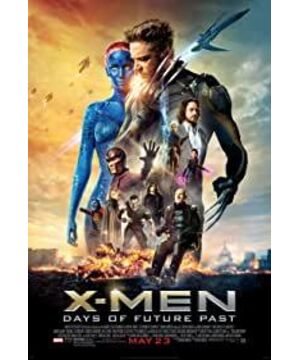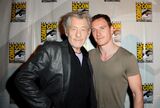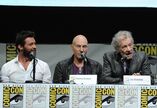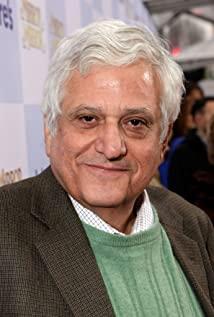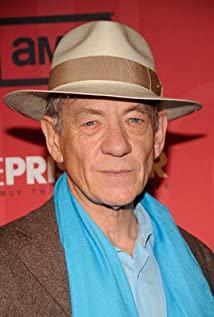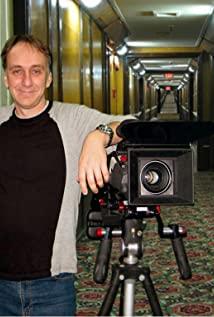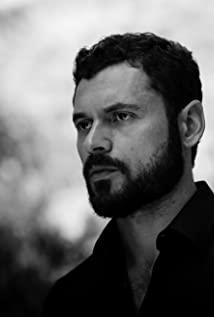After watching this film, the author's feelings are similar to the previous watching "Captain America 2" and "The Amazing Spider-Man 2":
1. This is a one-man show for women, and a group of big men act as supporting roles. Mystique (the film was translated into Mystery Woman) is the most important core character of the film, and several other male main characters such as Magneto, Professor X and Wolverine all develop the plot around him. The main plot of the whole film is to change the "original future" generated by Mystique's wrong behavior. Of course, Mystique has so many scenes, on the one hand, it is the plot factor, on the other hand, more importantly, the author thinks it has something to do with the actor Jennifer Lawrence, just like Hugh Jackman's Wolverine became the film's male lead. generally. As a new Oscar-winning actress born in the 1990s, now is when she is hot, and the movie will naturally use her as a major selling point of the film, just like Hugh Jackman, a super popular male god, as a selling point. Movies are commodities, and how to make this commodity attractive is the most important issue for directors to consider.
2. This film is mainly about storytelling, the content is quite substantial, and there are very few action scenes. Basically, all the fighting scenes in the film are in the trailer. Although not as bloated as The Amazing Spider-Man 2 with too many clues, the film is still a bit draggy. Therefore, the author is sure that this film will definitely be criticized by mainland audiences. After all, mainland moviegoers will not appreciate the plot, but will only watch the special effects scenes. Especially for a superhero blockbuster like the X-Men, if there are not many special effects action scenes to support it, I am afraid that not many mainland audiences are willing to go into the theater to watch this movie. But in fact, the film does spend most of its time telling a story, and apart from a longer battle at the beginning, the battle at the climax of the movie is very fragmented.
3. The highlight of the film is the character Quicksilver. The author believes that from the appearance of Quicksilver to the moment when he went to the Pentagon to rescue Magneto, it is the plot with the best rhythm, the most laughs, and the most in line with the characteristics of popcorn superheroes. In my opinion, he is probably the most successful character in the film. This can't help but make the author look forward to 2015's Avengers 2: Age of Ultron. There is also a corner of Quicksilver in that movie. I don't know if it will have the same miraculous effect as this movie.
The entire movie unfolds the plot in parallel with two timelines, using Wolverine's crossing as a link. In the climax part of the movie, the two lines are interlaced and edited, interspersed with each other, and compared with each other, which is very exciting. This may be the biggest role of this film. It connects the plots of the entire series of movies, justifies it, and eliminates the contradictions and loopholes in the main plot of each movie. At the end of the article, let the author sort out the plot and timeline of the entire X-Men series of movies according to my own understanding and cognition. If there is any objection, welcome to discuss.
X-Men 3 Parts, X-Men Prequel: Wolverine, Wolverine These five works, the author calls them "the original future", while X-Men: First World War and X-Men: Reverse the Future, the author Call it "the new future." The role of this film is to end the "original future" and open up a "new future".
X-Men 1: Opening in the modern era, Wolverine joins the X-Men after losing his memory.
X-Men 2: Continuing the time of X-Men 1, Stryker attacks the X Academy. Chingray dies and comes back to life, Cyclops dies.
X-Men 3: Continuing the time of X-Men 2, the final Wolverine hand edged Jean Grey.
X-Men Prequel: Wolverine: The span is quite large, from when Wolverine was a child in the 19th century, to his participation in World War I and World War II, and finally to the modern Wolverine being transformed by Stryker and losing his memory, which will add Wolverine to the X-Men The front gap is basically filled to completion.
X-Men: First Class: Written from World War II, tells the origin of everyone, Professor X parted ways with Magneto, and Professor X lost his legs. There is an important synchronization signal in this part: at the beginning, Professor X and Magneto asked Wolverine to join the team. The time of the film is mainly at the moment of the Cuban missile crisis.
Wolverine: Starting with the atomic bombing of Hiroshima. The time has come to X-Men 3 after Chingray really died, and Wolverine's experience in Japan can be confirmed from the memories of Wolverine's constant emergence of Chingray during this period. In the easter egg, several years after the Japanese incident, Professor X has been resurrected, and he and Magneto teamed up to find Wolverine to participate in the battle to save the mutants. At the time, a TV commercial at the airport was showing Trisk's improved Sentinel droid. The point in time now is modern, many years after X-Men 3.
X-Men: Days of Future Past: opens with a time point many years after the Wolverine Easter egg, when it is already the future (the original future), the battle between the mutants and the Sentinel enters the final stage, and the Sentinel is about to kill Magneto and Professor X came to end this timeline. Wolverine travels back to fifty years ago, after X-Men: World War I, presumably around the time Kennedy was assassinated and the Vietnam War was coming to an end. At this time, Magneto was arrested for assassinating Kennedy, and Professor X was depressed because all his students were recruited to participate in the Vietnam War. After the events of this film, the "original future" was terminated. We can see that the future Wolverine travels back to is no longer the "original future" before he traveled, but a "new future" developed from the past that he changed. At this future point in time, both Jean Grey and Cyclops are present, as are the main mutant characters in the X-Men trilogy, so it cannot simply correspond to the time point of the X-Men trilogy. One of the most important synchronization signals in the film is at the end of the film. In the memory of Wolverine from the future, it was Major Stryker who salvaged him, and it was Stryker who became a colonel many years later. At the end of the film, it was the Stryker who was transformed into Mystique instead of the real Stryker who salvaged Wolverine, that is to say, the original historical process was changed. Although the time point after this can correspond to the X-Men prequel: Wolverine, the author regards this as the end of the plots of the X-Men trilogy and Wolverine in the previous "Original Future" timeline, and even Can be understood as a signal of overthrow. The X-Men will develop according to "new history", which just leads to the new work of X-Men: Apocalypse.
View more about X-Men: Days of Future Past reviews


